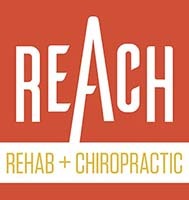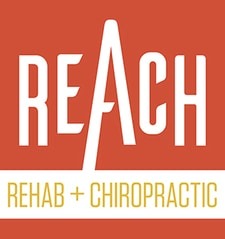Finding Sciatica Relief While Walking
Walking should be easy. It’s basic human movement 101. But when you’ve got sciatica? Every step feels like your leg is being jammed in a light socket.
That shooting, tingling, numbing feeling down your leg? It’s not just annoying—it’s a sign your sciatic nerve is under pressure.
But here’s the good news: sciatica relief while walking is possible—and no, it doesn’t involve buying a new mattress or swan-diving into a foam rolling routine.
Just two simple exercises (that you can do at home, without fancy equipment) can calm your sciatic nerve, improve your mobility, and help you walk like a normal human again.
Wait—What Even Is Sciatica? And Why Does Walking Make It Worse?
Sciatica refers to pain caused by irritation or compression of the sciatic nerve—the largest and longest nerve in your body. It begins in the lower back, travels through the hips and buttocks, and runs down each leg. When this nerve gets inflamed or compressed, it can produce sharp, burning, or radiating pain, as well as numbness or tingling—often felt down one side of the body.
Common causes include a herniated disc, spinal misalignment, or soft tissue irritation in muscles like the piriformis or hamstrings. While the source may vary, the result is similar: a hypersensitive nerve signaling distress.
Here’s what’s important to know—walking is typically a good thing for both your lower back and sciatica. It promotes healthy spinal motion, circulation, and mobility.
But when symptoms flare up, there’s a sweet spot to stay within. Too much walking too soon can overshoot your body’s current tolerance and provoke symptoms. In contrast, shorter walks spread throughout the day are often more manageable and beneficial than one long outing that leaves you worse off.
As for exercises, more isn’t better—better is better.
Relief doesn’t come from cycling through a long list of generic stretches. It comes from choosing the right 1–2 movements based on your presentation, performing them with solid form, and sticking with them consistently. Precision and consistency create results—not variety for variety’s sake.
Move 1: Reset with Press-Ups for Low Back Relief
If we had to bet on one exercise to help sciatica—Vegas odds—it’s the press-up.
Also known as “cobras” or “cobra press-ups,” this movement encourages spinal extension, which often helps reduce pressure on irritated nerve roots in the lower back. It’s simple, safe when performed correctly, and surprisingly powerful when you find your sweet spot.
Here’s how to do it:
- Lie face down with your hands beneath your shoulders, legs extended, and hips resting on the ground.
- Gently press your upper body upward—like an upward dog stretch—while keeping your hips down.
- Pause briefly at the top, then lower back down.
- Repeat 8–10 reps, 3–5 times per day.
Now, a critical note: if this movement brings on pain, don’t bail immediately!
Press-ups work best when you “kiss” or “touch” the edge of discomfort—not crash through it.
It’s normal to feel some tension or symptom reproduction at first.
What you’re watching for is this: over several reps or sessions, you’ll notice you can go further into the movement with less discomfort. That’s your signal that it’s helping.
Too often, people quit too early because it “hurts.” But done with the right force, reps, and timing, this move can be a game-changer. It’s not about chasing big stretches—it’s about being consistent in the right range, over time.

Move 2: Nerve Flossing Mobilization to Reduce Sciatic Tension
Nerve mobilization—also known as “nerve flossing”—is a targeted technique designed to help the sciatic nerve glide more easily through the tissues it runs through.
When the nerve is irritated or compressed, it can become overly sensitive, leading to pain, tingling, or numbness. This simple movement can help calm that sensitivity.
- Sit upright in a chair with your feet flat on the floor.
- Slowly straighten the affected leg while gently tilting your head upward.
- Return to the starting position by bending your knee and sitting up tall.
- Perform this smooth, controlled movement for 10 to 12 repetitions, once or twice a day.
This exercise isn’t about stretching the nerve—it’s about encouraging adaptation through gentle movement.
Nerve mobilization helps reduce stiffness and ease built-up tension from prolonged walking or sitting. Over time, it can improve your walking tolerance and make daily movement more comfortable.
If your symptoms are flaring, think of this as a “reset” button—small, deliberate motions to get you back in rhythm without provoking more pain.
The Long-Term Benefits of These Sciatica-Friendly Exercises
Consistency is the unsung hero of recovery.
When practiced regularly, these two foundational exercises can relieve nerve compression, improve flexibility, and boost walking tolerance.
Over time, they help restore healthier spinal mechanics and reinforce resilient soft tissues. Patients often report better posture and fewer flare-ups just from staying committed to this daily habit.
Once basic movements like bending, standing, and squatting start to feel more natural with less pain, that’s your green light to level up.
Begin layering in strategic core stability work to cement the positive changes.
You can also start brushing and flossing your spine daily (yes, like your teeth—but for your back). A couple of sets per day—morning and evening—helps reinforce your gains and bulletproof your body against future setbacks.
Think of it this way: press-ups are your Reset—your first move out of pain. These daily habits help you Restore normal, pain-free movement, and over time, you’ll Reinforce that progress with strength and stability.
That’s the REACH 3Rs method: Reset. Restore. Reinforce. Rinse and repeat (just not with actual soap).
And here’s the kicker: all of this is non-invasive, simple to do at home, and meets you exactly where you are—not where some textbook says you “should” be. That’s why this approach works for real people with real sciatica symptoms who just want to walk without wincing.


Find Relief with REACH Rehab + Chiropractic’s Expert Support
These exercises can go a long way—but let’s be honest: lasting relief usually needs more than a few DIY stretches from the internet.
At REACH Rehab + Chiropractic, we build treatment plans around you—your body, your lifestyle, and your goals.
Whether you’re brand new to trying to find the correct sciatica relief exercises for you or tired of chasing short-term fixes, we’ll help you move better, feel stronger, and finally get ahead of the pain in the shortest amount of time possible.
Our approach blends expert hands-on care with smarter movement strategies and clear education, so you’re not just getting treated—you’re getting back in control.
Call/text (734) 335-0212 to schedule your visit, and let’s get you walking easier (without wincing every 10 steps).


